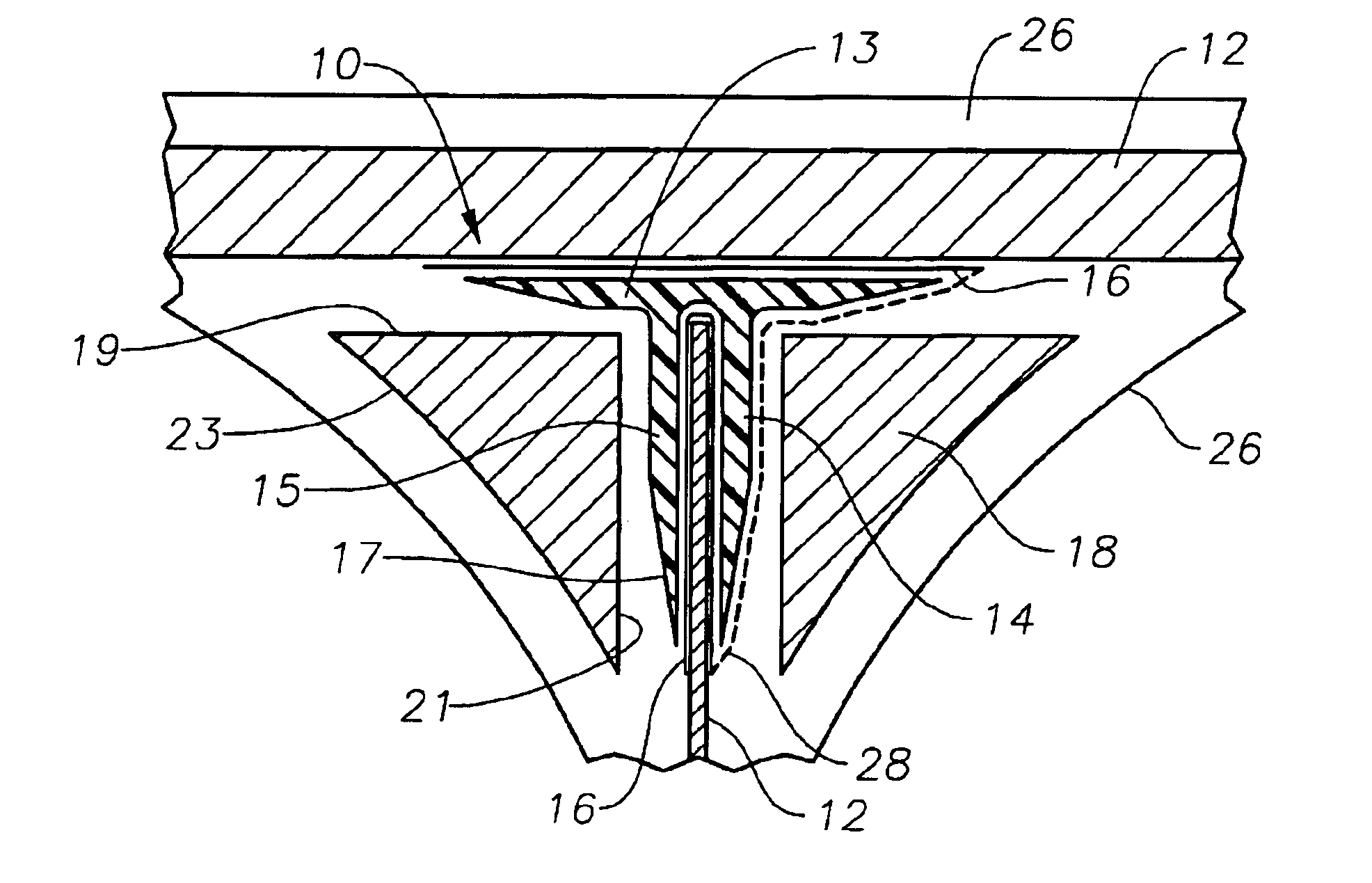System and method of forming structural assemblies with 3-D woven joint pre-forms
a technology of woven textiles and pre-forms, which is applied in the direction of machine/engine, packaging, and surface pretreatment for adhesion processes, etc. it can solve the problems of high cost of hand woven textiles, low peel strength of composite resins, and limited out-of-plane load capacity of conventional composite structural joints (co-cured, bonded or bolted), so as to eliminate the need for expensive tooling and fine tolerances, the effect of increasing the structural strength of pre-form
- Summary
- Abstract
- Description
- Claims
- Application Information
AI Technical Summary
Benefits of technology
Problems solved by technology
Method used
Image
Examples
Embodiment Construction
Preferred embodiments of the present invention are illustrated in the FIGUREs, like numerals being used to refer to like and corresponding parts of the various drawings.
The present invention provides a unique method of assembling structural components as illustrated by FIG. 4. FIG. 4 depicts a structural assembly or part 10. This assembly is formed by various sub-assemblies 12. Subassemblies 12 are typically pre-cured laminated composite structures or metallic structures. Additionally, subassemblies 12 can be constructed from honeycomb sandwich structures or solid monolithic structures. However, the present invention need not be limited to this material type for sub-assemblies 12, other material types such as graphite, fiberglass, metals, Kevlar, and the like, as known to those skilled in the art can be used.
In the most general application, structural assembly 10 is formed by coupling at least one sub-assemblies 12 with an uncured pre-form 14 in a curing process. In one embodiment o...
PUM
| Property | Measurement | Unit |
|---|---|---|
| Angle | aaaaa | aaaaa |
| Pressure | aaaaa | aaaaa |
| Adhesivity | aaaaa | aaaaa |
Abstract
Description
Claims
Application Information
 Login to View More
Login to View More - Generate Ideas
- Intellectual Property
- Life Sciences
- Materials
- Tech Scout
- Unparalleled Data Quality
- Higher Quality Content
- 60% Fewer Hallucinations
Browse by: Latest US Patents, China's latest patents, Technical Efficacy Thesaurus, Application Domain, Technology Topic, Popular Technical Reports.
© 2025 PatSnap. All rights reserved.Legal|Privacy policy|Modern Slavery Act Transparency Statement|Sitemap|About US| Contact US: help@patsnap.com



